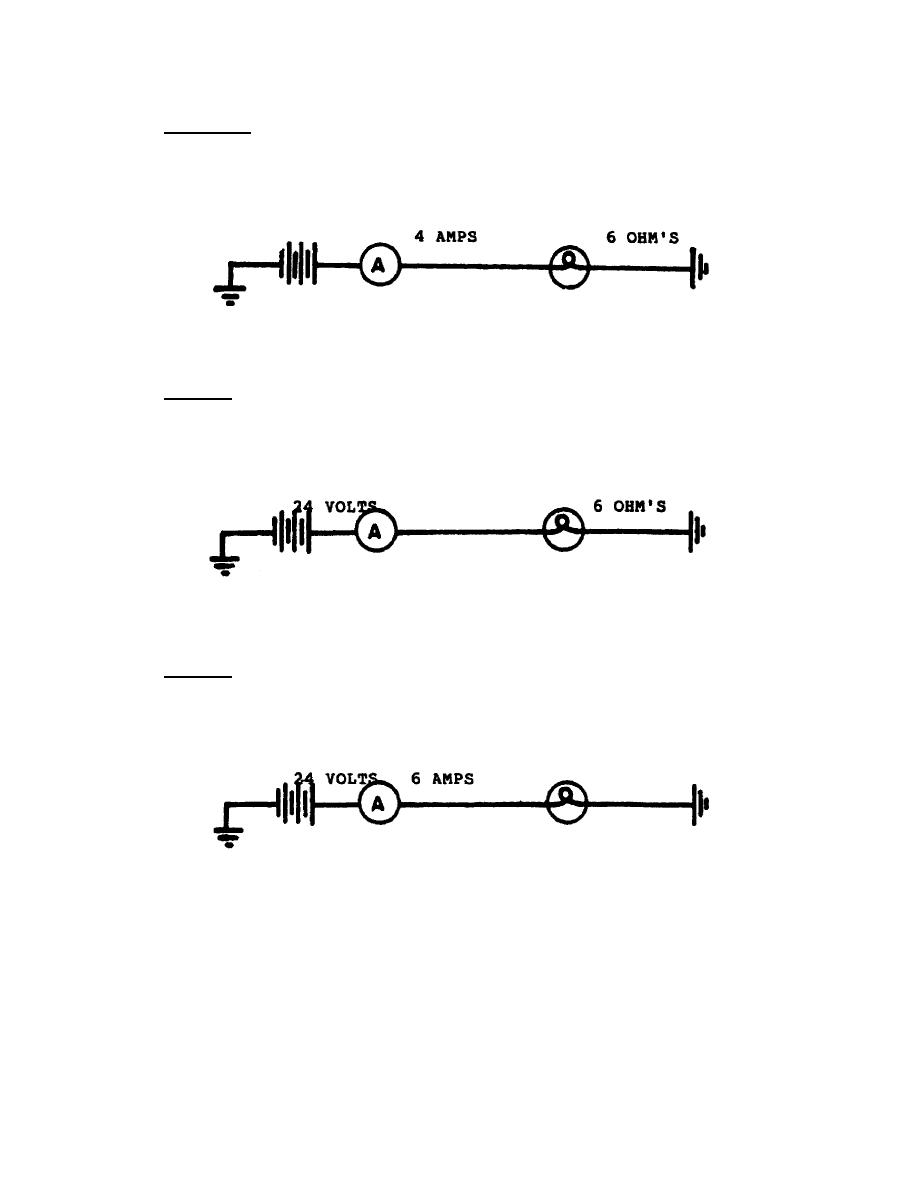
The mathematical formula is written in one of the following three ways:
a. E = I x R. The voltage in a circuit equals the current multiplied
by the resistance. An example of Ohm's Law in relation to voltage is an
electric heater which has a known resistance of 20 ohms. The same heater
requires a current flow of 6 amperes for proper operation.
Figure 13. Determine Voltage.
b. I = E/R. The current equals the voltage divided by the resistance.
An example of Ohm's Law in relation to current is an electric horn that
requires a pressure of 12 volts and offers 3 ohms of resistance to the flow of
current.
Figure 14. Determine Current.
c. R = E/I. The resistance of the circuit equals the voltage divided by
the current. An example of Ohm's Law in relation to the resistance is an
electric iron that operates from a 120 volt input and requires a current flow
of 5 amperes.
Figure 15. Determine Resistance.




 Previous Page
Previous Page
